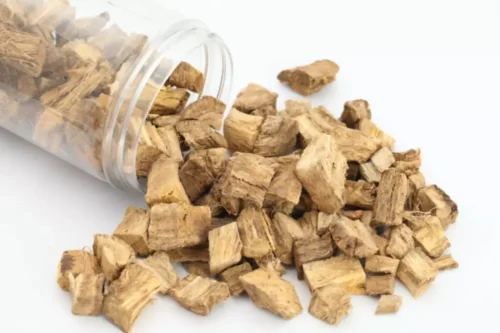
Intravenous drug abusers with DVT have poor outcomes with high morbidity, mortality, and healthcare costs as compared to the general population. Various studies found that they have slower recovery, recurrent VTE, longer hospital stay, high readmission rate, and low survival thus, negatively impacting productivity and the overall economy. Patients with symptoms that indicate DVT should be questioned whether they inject recreational drugs, and if they do, they should be assessed as high-risk patients [14].

Infectious Diseases in Persons Who Inject Drugs

This would require active participation of orthopaedic surgeons, infectious disease specialists, home health care, and skilled nursing facilities. Radiographic findings in acute osteomyelitis include periosteal reaction (Fig. 9), regional osteopenia, cortical erosion, endosteal scalloping and overlying soft tissue swelling or deformity [17, 18]. Plain radiographs are, however, relatively insensitive in early bone and joint infections as bone destruction of up to 30% may be needed for radiographic identification and visible erosions in osteomyelitis can take https://ecosoberhouse.com/ up to 3 weeks to develop [17, 18]. CT findings are similar to those on plain radiographs and include soft tissue swelling, regional osteopenia and cortical erosions. While CT provides greater sensitivity than plain radiographs and is the imaging modality of choice for assessment of osseous erosions, it cannot reliably identify bone oedema early in the disease process [17, 18]. Bone and skeletal infections are more common in PWID, primarily from hematogenous spread of bacteria from other sites, such as infected heart valves or skin and soft tissues.
- IV drug use introduces a drug directly to the bloodstream, heightening and intensifying its effects.
- If you have an open wound from an IV injection or IV drug use, bacteria may enter and cause tetanus to develop.
- MRI protocols typically include sagittal T1, T2, STIR and contrast-enhanced imaging of the affected segment of the spine in addition to axial T2 and contrast-enhanced imaging at levels noted to be abnormal on initial sagittal sequences [20].
- The independent sample Student t-test or ANOVA was used to compare continuous data between the RIVDU and non-RIVDU cohorts and subcohorts.
- Additionally, they more often required treatment with IV antibiotics and needed a higher number of total procedures in the treatment of their infection.
- The search for a rapid increase in the concentration of drugs in the blood is the primary cause of intravenous drug abuse.
- Assessment of the extent of the infection in adjacent soft tissues, differentiation of bone from soft tissue infection and surgical planning can also be reliably achieved on MRI (Fig. 12) [17, 18].
Why IV Drug Use Produces Infection
The dangers of IV drug use include an increased risk of infection, permanent damage and raised risk of an overdose. Pulmonary embolism has been reported as a complication in approximately 10.3% of cases of internal jugular vein thrombosis [43]. Alternatively, a few documented cases of EJV thrombosis with clot propagation to the upper extremities and pulmonary vasculature exist [23, 44].
Recognizing signs of drug use or intoxication
Use of hallucinogens can produce different signs and symptoms, depending on the drug. The most common hallucinogens are lysergic acid diethylamide (LSD) and phencyclidine (PCP). Synthetic cannabinoids, also called K2 or Spice, are sprayed on dried herbs and then smoked, but can be prepared as an herbal tea. Despite manufacturer claims, these are chemical compounds rather than “natural” or harmless products. These drugs can produce a “high” similar to marijuana and have become a popular but dangerous alternative.

Treatment Parameters
It may be done by family and friends in consultation with a health care provider or mental health professional such as a licensed alcohol and drug counselor, or directed by an intervention professional. It involves family and friends and sometimes co-workers, clergy or others who care about the person struggling with addiction. Sometimes called the “opioid epidemic,” addiction to opioid prescription pain medicines has reached an alarming rate across the United States.

Similar content being viewed by others
- Plain radiographs are the initial imaging test and can show a joint effusion and soft tissue swelling initially while peri-articular osteopenia due to local hyperaemia, joint space loss or osseous erosions may develop later (Fig. 14) [24, 25].
- Sadly, something called the “drug ceiling effect” can occur, where the drug will reach its maximum effect regardless of taking higher doses.
- Aureus and group A and G streptococci, whereas gram-negative bacilli (e.g., Pseudomonas aeruginosa) , Eikenella corrodens, and Candida are less common but increasingly reported in PWID.72–74 Tuberculosis, which is more prevalent in PWID, may also cause skeletal infections.
- Initially, HIV causes symptoms similar to the flu, including body aches, chills and fever.
- Signs and symptoms of drug use or intoxication may vary, depending on the type of drug.
Endocarditis can eventually cause a heart murmur, as well as fever, chest pains, fainting spells, shortness of breath, and heart palpitations as well as congestive heart failure. It can be treated with antibiotics or antifungal agents if detected early, but requires several weeks, or months, of IV antibiotics and/or heart valve replacement surgery if not detected early. Identification of IDUs is crucial – both to determine clinical risk and to minimise the risk of unexpected withdrawal. An accurate drug history, including route of administration, should be completed for all patients on admission, acknowledging that this may need to be repeated until an accurate picture is gained.
- Manifestations include fever, chills, rigors, and draining sinus with further life-threatening complications such as septic PE and right-sided infective endocarditis [35].
- Additionally, it was described by several participants that even though harm reduction knowledge may be present, priority of risk reduction strategies may be diminished as a consequence of drug high.
- Track marks are the scars that appear along the veins of someone who injects frequently and repeatedly uses the same injection sites.
Participants described engagement in high risk injection behaviors prior to hospitalization with SBI. Qualitative analysis led to the proposal of an Ecosocial understanding of SBI risk, detailing the multi-level interplay between individuals and their social and physical environments in producing risk for negative health outcomes. Bone marrow oedema is the earliest imaging finding identifiable in acute osteomyelitis and appears on MRI as high T2 and STIR signal intensity of the bone with corresponding low T1 signal (Figs. (Figs.1010 and and11)11) [17, 18]. Assessment of the extent of the infection in adjacent soft tissues, differentiation of bone from soft tissue infection and surgical planning can also be reliably achieved on MRI (Fig. (Fig.12)12) [17, 18]. Abscesses are a common complication of intravenous drug use, resulting in an uncomfortable collection of pus under the skin.
Acute infections in intravenous drug users
Tetanus is a bacterial infection that occurs when tetanus spores enter a wound and release tetanus bacteria, usually after a scab has already formed. The bacteria then enter the bloodstream and cause an infection, which is characterized by muscle spasms or rigidity, iv drug use especially in the neck and jaw (tetanus is commonly called “lockjaw”). Bacteremia is when bacteria entersthe blood- stream that can be caused by injecting with contaminated water, re-using old cottons, or failing to clean the skin prior to injection.
- Cellulitis is one of the most common infections that affect people who use IV drugs.
- Controlled medical substances, which are part of the early drugs of abuse and are usually used for various medical problems such as pain and anxiety, are frequently found among the intravenous drugs that are intended to be diluted as an injectable solution [25].
- It is a life-threatening surgical emergency but can be difficult to recognise clinically in its early stages.
The evolving opioid epidemic coupled with limited knowledge of potential risk factors and increasing incidence of SBI in PWID, provides a significant opportunity for intervention that may reduce morbidity and mortality in this vulnerable population. Harm reduction strategies targeting SBI will need to be comprehensive given multiple potential means of introducing bacteria into the process and fluid nature of the risk (during and between separate injection events). The typical medical professional offers minimal information (i.e., clean needle use, avoid needle sharing) for safe injection in the context of complex and varied behaviors. PWID interviewed in this study demonstrate what is likely widespread basic understanding of safe injection practices.

